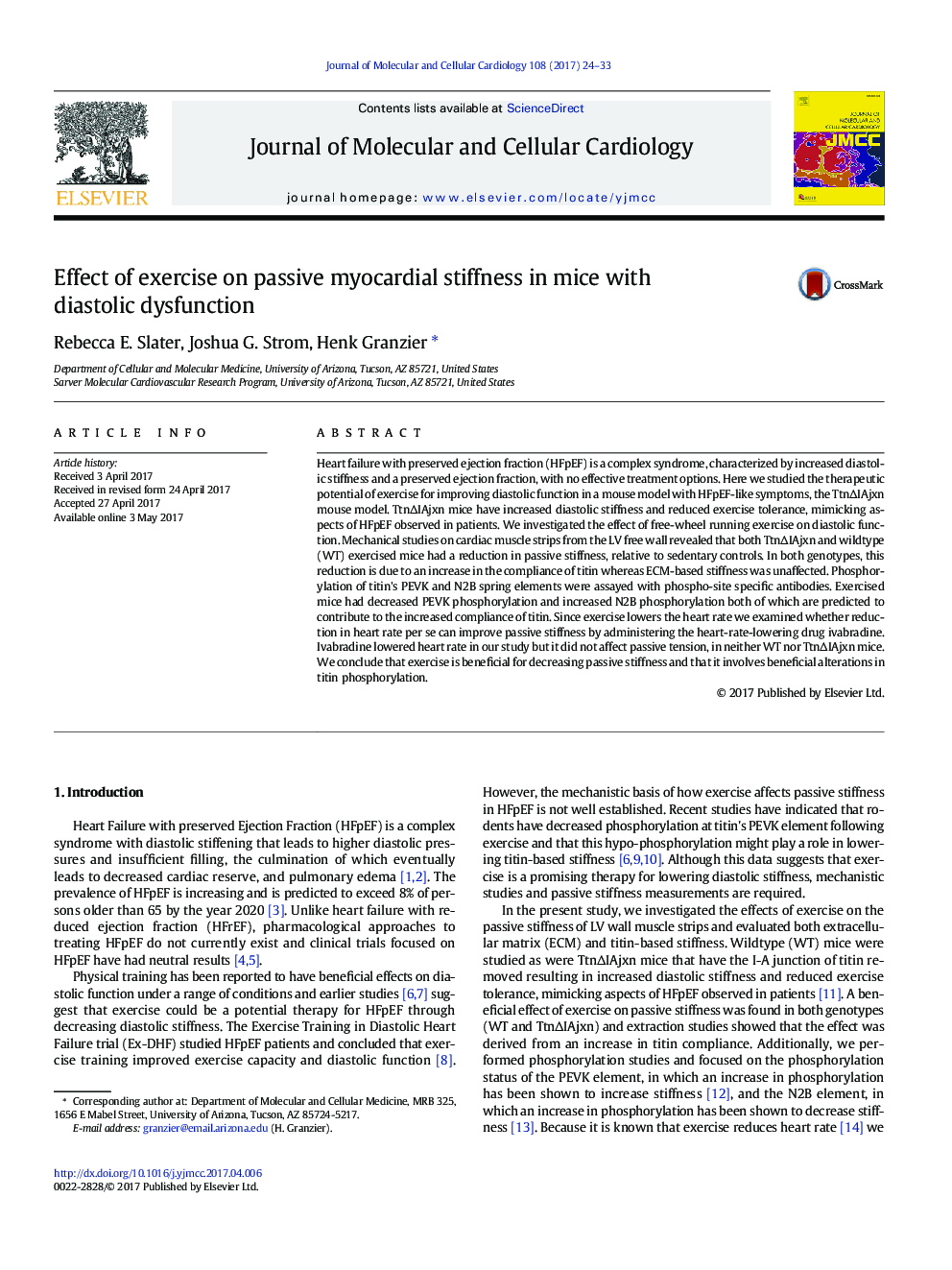| کد مقاله | کد نشریه | سال انتشار | مقاله انگلیسی | نسخه تمام متن |
|---|---|---|---|---|
| 5533533 | 1550398 | 2017 | 10 صفحه PDF | دانلود رایگان |
- The therapeutic potential of exercise for improving diastolic function in a mouse model with HFpEF-like symptoms was studied.
- Exercise lowered passive stiffness at the isolated muscle levels with the effect largely due to increased titin compliance.
- Exercise altered the phosphorylation status of titin which is predicted to contribute to the increased compliance of titin.
- Exercise targets titin and improves diastolic health.
Heart failure with preserved ejection fraction (HFpEF) is a complex syndrome, characterized by increased diastolic stiffness and a preserved ejection fraction, with no effective treatment options. Here we studied the therapeutic potential of exercise for improving diastolic function in a mouse model with HFpEF-like symptoms, the TtnÎIAjxn mouse model. TtnÎIAjxn mice have increased diastolic stiffness and reduced exercise tolerance, mimicking aspects of HFpEF observed in patients. We investigated the effect of free-wheel running exercise on diastolic function. Mechanical studies on cardiac muscle strips from the LV free wall revealed that both TtnÎIAjxn and wildtype (WT) exercised mice had a reduction in passive stiffness, relative to sedentary controls. In both genotypes, this reduction is due to an increase in the compliance of titin whereas ECM-based stiffness was unaffected. Phosphorylation of titin's PEVK and N2B spring elements were assayed with phospho-site specific antibodies. Exercised mice had decreased PEVK phosphorylation and increased N2B phosphorylation both of which are predicted to contribute to the increased compliance of titin. Since exercise lowers the heart rate we examined whether reduction in heart rate per se can improve passive stiffness by administering the heart-rate-lowering drug ivabradine. Ivabradine lowered heart rate in our study but it did not affect passive tension, in neither WT nor TtnÎIAjxn mice. We conclude that exercise is beneficial for decreasing passive stiffness and that it involves beneficial alterations in titin phosphorylation.
Journal: Journal of Molecular and Cellular Cardiology - Volume 108, July 2017, Pages 24-33
